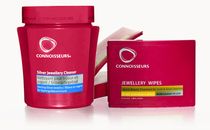
Useful Information
Customer Testimonials
Wonderful Cat Pendant with Sapphire Eye, lovely made by Andrew McCallum. Great, very friendly customer service.
Absolutely recommended, if you look for something Special.
Absolutely recommended, if you look for something Special.
Simone M., Germany
(translated from German)
Change Of Mind?
No Problem!

Welcome to JAREEYA
Notice
Due to the current high gold prices, we decided to stop selling fine jewellery for the time being.
However, we did stock up a few items when gold was still cheaper, which we sell at highly competitive prices. You can find them on our sister site Idin Jewellery.
Quick Links
Here are some quick links to various sections of fine jewellery on our sister site (the links will take you to Idin Jewellery):
Earrings
- Gold Earrings – Selection of 9ct gold earrings
- Sterling Silver Earrings – Cute, elegant and affordable Sterling Silver Earrings
- Pearl Earrings – Sumptuous looks with Real Pearls
Bangles & Bracelets
- Gold & Silver Bracelets – Add a Bracelet to your collection
- Gold & Silver Bangles – Elegant Precious Metal Bangles
Rings
- Sterling Silver Rings – Classy and Contemporary Silver Rings
Necklaces
- Sterling Silver Necklaces
- Sterling Silver Pendants – When you only need a Pendant for your Necklace
Pre-Loved
- Pre-Loved Gold Rings – Grab a bargain with a previously treasured ring
Designer Jewellery
- Designer Jewellery – Find a carefully crafted piece of thoughtfully created designer jewellery



